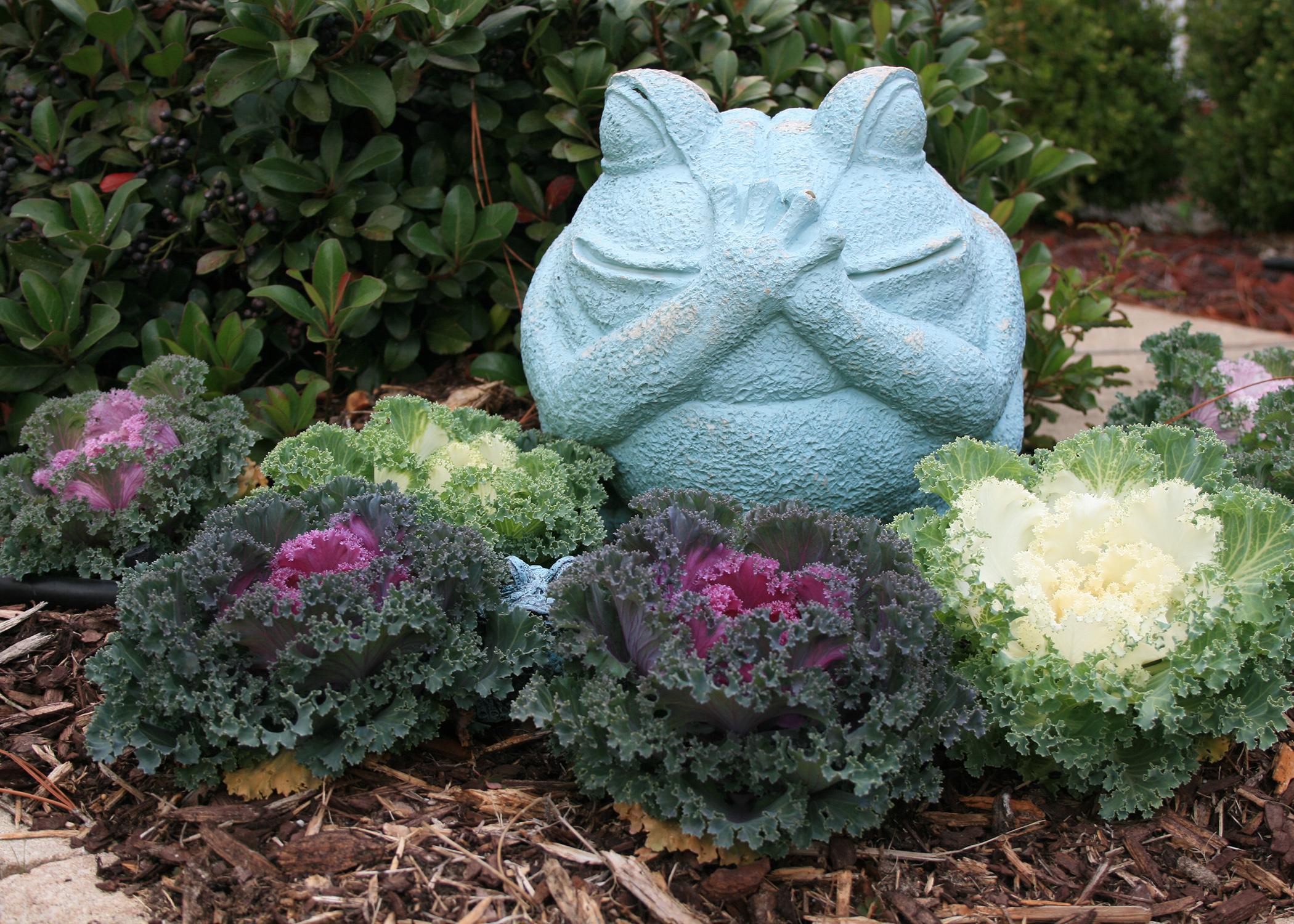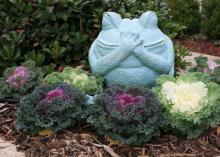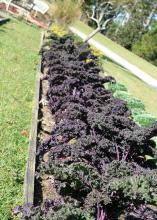Information Possibly Outdated
The information presented on this page was originally released on October 12, 2015. It may not be outdated, but please search our site for more current information. If you plan to quote or reference this information in a publication, please check with the Extension specialist or author before proceeding.
Ornamental cabbage, kale make excellent winter color
Some of the best choices we can make for reliable late fall and winter color are cabbage and kale. I’m not talking about the regular vegetable garden varieties, though these are quite pretty in their own right. The cabbage and kale you need are the ornamental types, and the time to plant is now.
The ornamental types have been bred for a vibrant display of dazzling colors that range from snowy white to red, pink and purple. Many of the selections in garden centers may seem a little green and you’ll wonder where the color is. As the temperatures get cooler, the colors will develop.
Garden centers often place the cabbage and kale together as they tend to look alike and are the same species, Brassica oleracea. But to me, that is where the similarity ends. Ornamental cabbage usually refers to selections that have smooth and mostly unruffled leaves. Kale, on the other hand, has ruffled, textured leaves, and many have feathered leaf edges. This makes ornamental kale much more interesting in the winter landscape.
There are lots of great selections of ornamental kale, but not all garden centers will have them all. In fact, you might have to shop around since there has been a shortage of kale seed for growers.
Redbor kale is an outstanding choice. The frilly leaves are a solid purple-red that intensifies as the temperatures get colder during the winter. This is true for all of the ornamental kale and cabbage varieties. Redbor is also a long-lived plant. Though marketed for the cool winter months, I’ve seen this plant still looking good in July and August in south Mississippi. There has been a Redbor shortage due to a failure in the seed crop, but some growers may have saved some seed from previous years. Call around and, if you find some, you won’t be disappointed.
Red Chidori kale is another good selection that forms loose heads that are extremely colorful, with new foliage being a bright magenta-red. As the leaves mature, they take on a darker green while the veins maintain the magenta-red color. This variety has performed well in our trials at Poplarville and Crystal Springs.
Good soil drainage is a must. Raised beds are great for in-ground ornamental kale. Adding composted organic matter at planting will increase drainage. Make sure the soil does not dry out. I really like growing these plants in containers because of the superior media drainage. I never have to worry about the plants having wet feet.
Everyone knows about droughty weather in the hot summer season, but it can happen in the winter season, too. Cold fronts moving through can be relatively dry, and the soil moisture can be rapidly depleted. Kale likes consistent soil moisture. Apply a layer of mulch to help conserve soil moisture.
For best growth of ornamental kale, don’t neglect fertilizing the plants as these are actually fairly heavy feeders. I like to add a tablespoon of a good, slow-release fertilizer into each planting hole to get the plants off to a great start. Then apply a water-soluble fertilizer monthly to keep the plants healthy and growing strongly.
Many gardeners I speak with don’t realize that ornamental kale is edible. The bright colors add pizazz to any fresh salad or stir-fry. A favorite snack for many Mississippi gardeners is cutting kale into squares and making kale chips. In the Bachman household, we grow the Nagoya ornamental kale because it is already chip-shaped. Mix with a little extra-virgin olive oil and sea salt, and bake at 240 degrees for about 45 minutes. Only do this with ornamental kale that you have started from seed. Fortunately, it’s not too late in the season to get growing.




